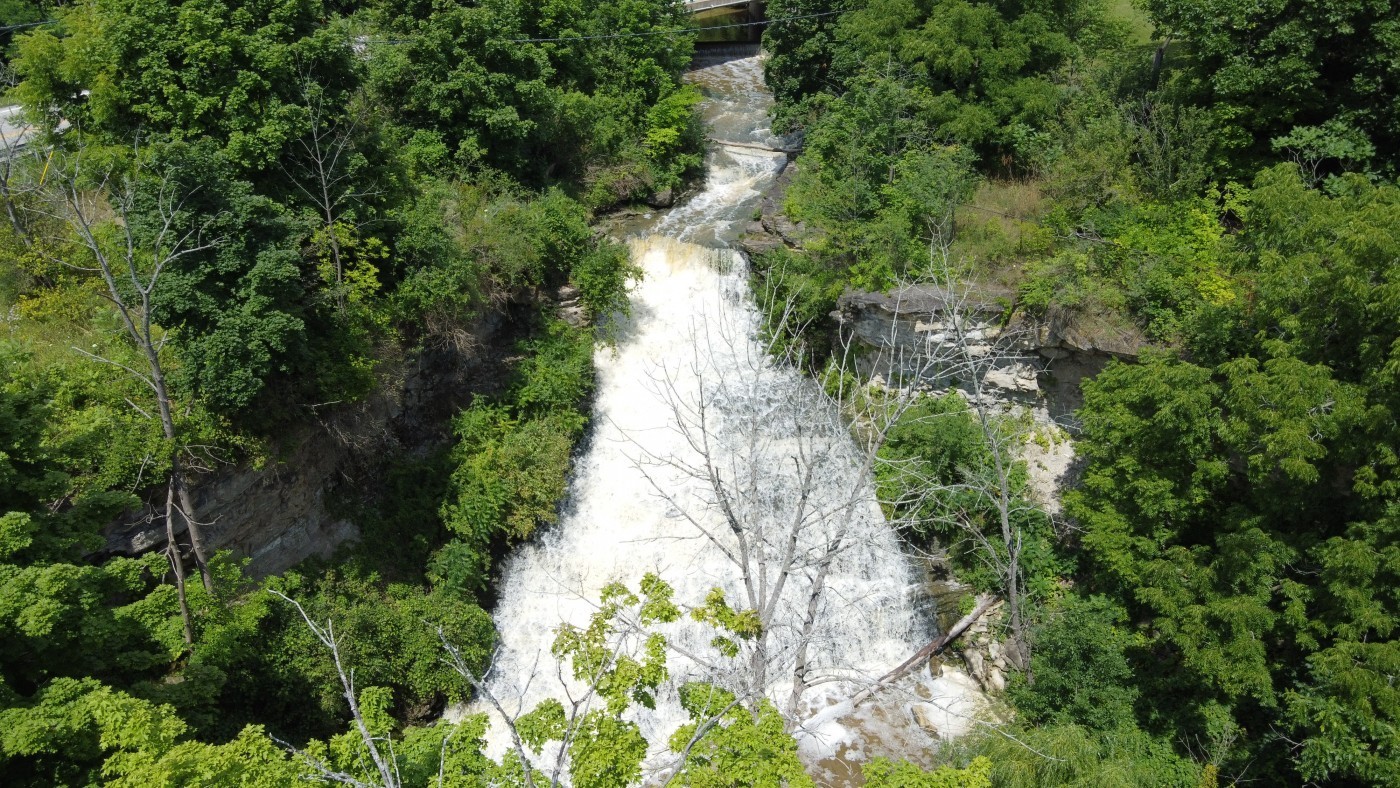Natural Asset Analysis and Valuation Project redefines nature-based solutions
Climate change has been widely acknowledged as a major threat to global ecosystem function, with its impacts becoming increasingly evident in our daily lives. For decades, our society has relied heavily on engineered infrastructure to solve environmental challenges, but amid this crisis, natural or green infrastructure, also known as nature-based solutions, are increasingly important to reducing the impacts of climate change and protecting ecosystems and biodiversity.
To better understand these nature-based solutions, NPCA completed a comprehensive analysis of natural assets within the Niagara Peninsula watershed, which encompasses the entire Niagara Region and portions of the City of Hamilton and Haldimand County.
A natural asset refers to the stock of natural resources and ecosystems that provide essential services to humans and the environment. These include forests, wetlands, meadows, rivers, and other natural areas that offer benefits such as clean air, water filtration, carbon uptake and storage, and recreational spaces. Unlike engineered infrastructure, natural assets are living systems that can regenerate and provide sustainable services over time.
This project dives deep into the concept of ‘nature as infrastructure’, creating a detailed inventory of natural assets, evaluating condition, and quantifying economic value as well as the multitude of positive benefits these assets provide.
Revealing fascinating insights, this initiative redefines how we perceive nature. It showcases its invaluable role in battling climate change and highlights the necessary shift from engineered infrastructure to natural solutions.
- Natural Assets: Covering 83.5 per cent of the Niagara Peninsula watershed, these assets include forests, wetlands, and meadows, and agricultural lands.
- Condition Assessment: An impressive 98 per cent of natural assets are in 'fair' or 'good' condition, with wetlands receiving top marks. Assets in good condition are anticipated to provide more ecological services.
- Replacement Costs: Given the complexity and extended time required to restore natural assets, the estimated replacement cost for these natural assets exceeds $10 billion, with forests accounting for 46 per cent and wetlands 44 per cent of this value.
- Ecosystem Services Valuation: The annual value of ecosystem services provided by these assets is estimated between $331 million to $463 million. These services include carbon sequestration, stormwater regulation, water quality improvement, and nature-based recreation.
- Forests, meadows, and wetlands provide significant stormwater management valued at approximately $103 million annually.
- Forests also contribute to air quality by removing pollutants, a service valued at $8.5 million annually.
- Natural assets support biodiversity, providing a habitat preservation value estimated at $27 million annually.
- Wild pollinators contribute approximately $42 million annually to crop productivity.
- Carbon Storage and Sequestration: Forests sequester carbon at rates from 0.25 to more than 2.5 tonnes per hectare annually. With total carbon storage exceeding 1.3 million tonnes, it is one of the most valuable ecosystem services forests provide.
The significance of these findings is profound, especially in the context of climate change. Natural assets are not just beautiful landscapes; they are powerful tools in mitigating climate impacts, enhancing biodiversity, and providing economic benefits. By counting nature as an “asset” just like other physical infrastructure, we can better understand, track, protect, and invest in it to ensure it continues to provide important ecosystem services.
The valuable information collected through this project will be critical in supporting NPCA’s mandate and ambitious strategic goals with improved best practices. Though not the first conservation authority to undertake such initiative, we are the first to do so on this scale. We aim to set a new benchmark for natural asset management and demonstrate NPCA’s commitment to innovation and conservation leadership.
As part of this project, NPCA collaborated with the Town of Fort Erie to inventory, assess, and valuate their natural assets. This pilot project sets the stage for how municipalities can collaborate with their local conservation authority to integrate green infrastructure into their asset management plans. This collaboration helps ensure the proactive and sustainable management of natural assets in the Niagara Peninsula watershed, maximizing their benefits to the community, all while enhancing climate resilience.
NPCA's Watershed Natural Asset Analysis and Valuation initiative is a game-changer. It emphasizes the crucial role of nature in our fight against climate change and the need to shift our perspective from engineered solutions to natural ones. By recognizing and valuing natural assets, we can create a more sustainable and resilient future for ourselves and generations to come. Nature, indeed, is the ultimate answer.
READ THE INVENTORY & VALUATION REPORT
© 2025 Niagara Peninsula Conservation Authority (NPCA). All rights reserved. This report and its contents protected by copyright. Reproduction, distribution, or use of any part of this document is prohibited without written permission from the NPCA. For inquiries, please contact: tgaade@npca.ca.
Media inquiries can be directed to:
Erika Navarro, Communications & Marketing Specialist
Mobile: 905-650-4027
enavarro@npca.ca
A media backgrounder is available, please inquire.

